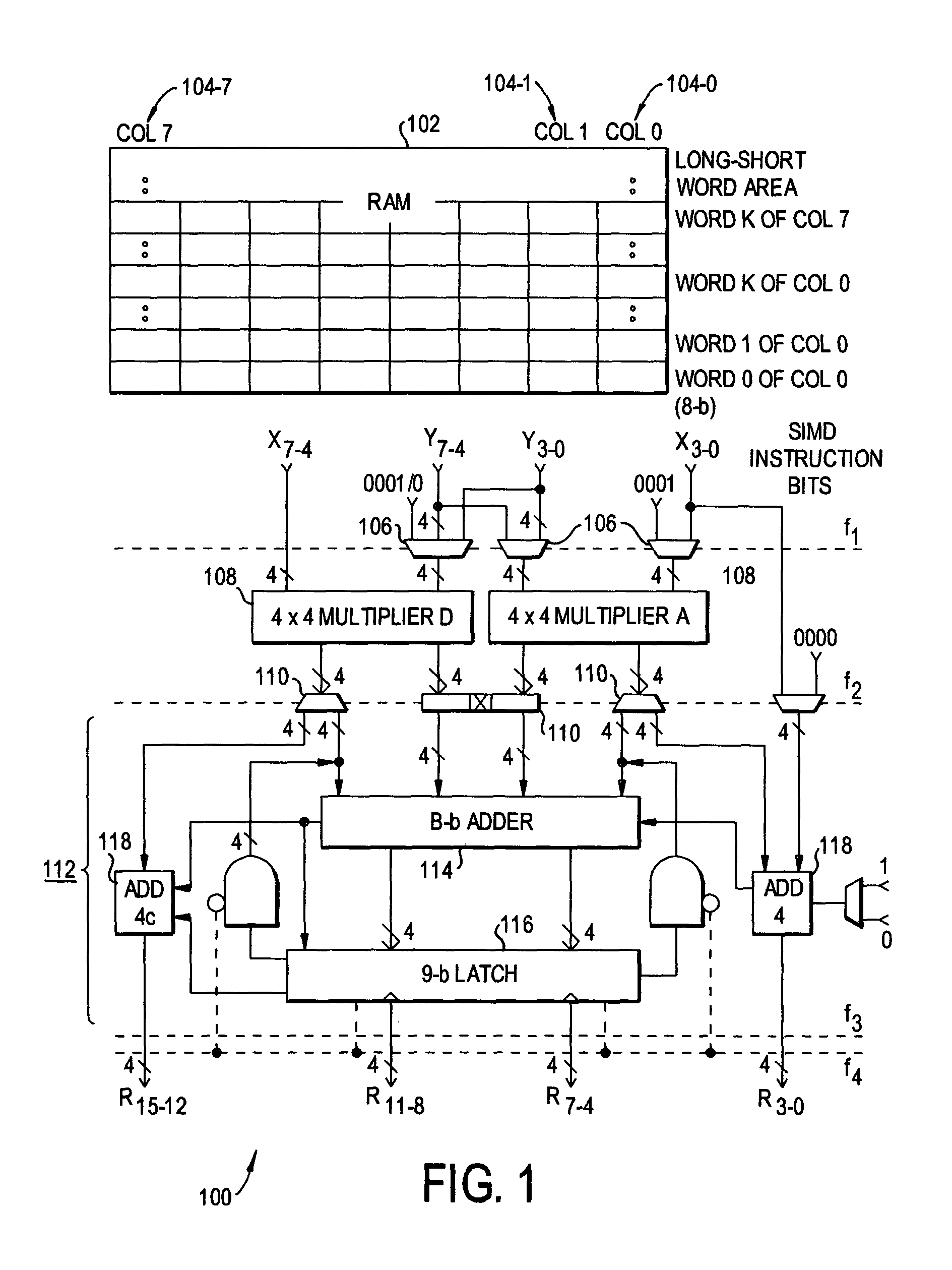Multiplier-based processor-in-memory architectures for image and graphics processing
a multi-core processor and image processing technology, applied in the field of processor-in-memory architectures for image and graphics processing, can solve the problems of architectures experiencing bottlenecks, large computing power demand, and large computing power consumption of these devices, and achieves low cost, low cost, and high controllability and observability. high
- Summary
- Abstract
- Description
- Claims
- Application Information
AI Technical Summary
Benefits of technology
Problems solved by technology
Method used
Image
Examples
Embodiment Construction
[0041]Preferred embodiments of the present invention will be set forth in detail with reference to the drawings, in which like reference numerals refer to like elements throughout. The first preferred embodiment provides both a new arithmetic scheme for ALU design and a new digital accelerator architecture for implementing that arithmetic scheme. The second preferred embodiment adds self-repair capabilities.
[0042]The arithmetic scheme has the following characteristics:
[0043]1. It uses small multipliers (ex. 4×4-b) instead of full-adder and / or other parallel counters as building blocks. That provides greater flexibility for enlarging functionality through reconfiguration.
[0044]2. It enables multipliers directly dealing with wider sense arithmetic operations including:[0045]a family of multiplications: 8×8-b, 16×16-b, 32×32-b, vector×vector, and vector×matrix, i.e. size-4 vector and size 4×4 matrix products; and[0046]merged arithmetic operations including addition, subtraction, compar...
PUM
 Login to View More
Login to View More Abstract
Description
Claims
Application Information
 Login to View More
Login to View More - R&D
- Intellectual Property
- Life Sciences
- Materials
- Tech Scout
- Unparalleled Data Quality
- Higher Quality Content
- 60% Fewer Hallucinations
Browse by: Latest US Patents, China's latest patents, Technical Efficacy Thesaurus, Application Domain, Technology Topic, Popular Technical Reports.
© 2025 PatSnap. All rights reserved.Legal|Privacy policy|Modern Slavery Act Transparency Statement|Sitemap|About US| Contact US: help@patsnap.com



